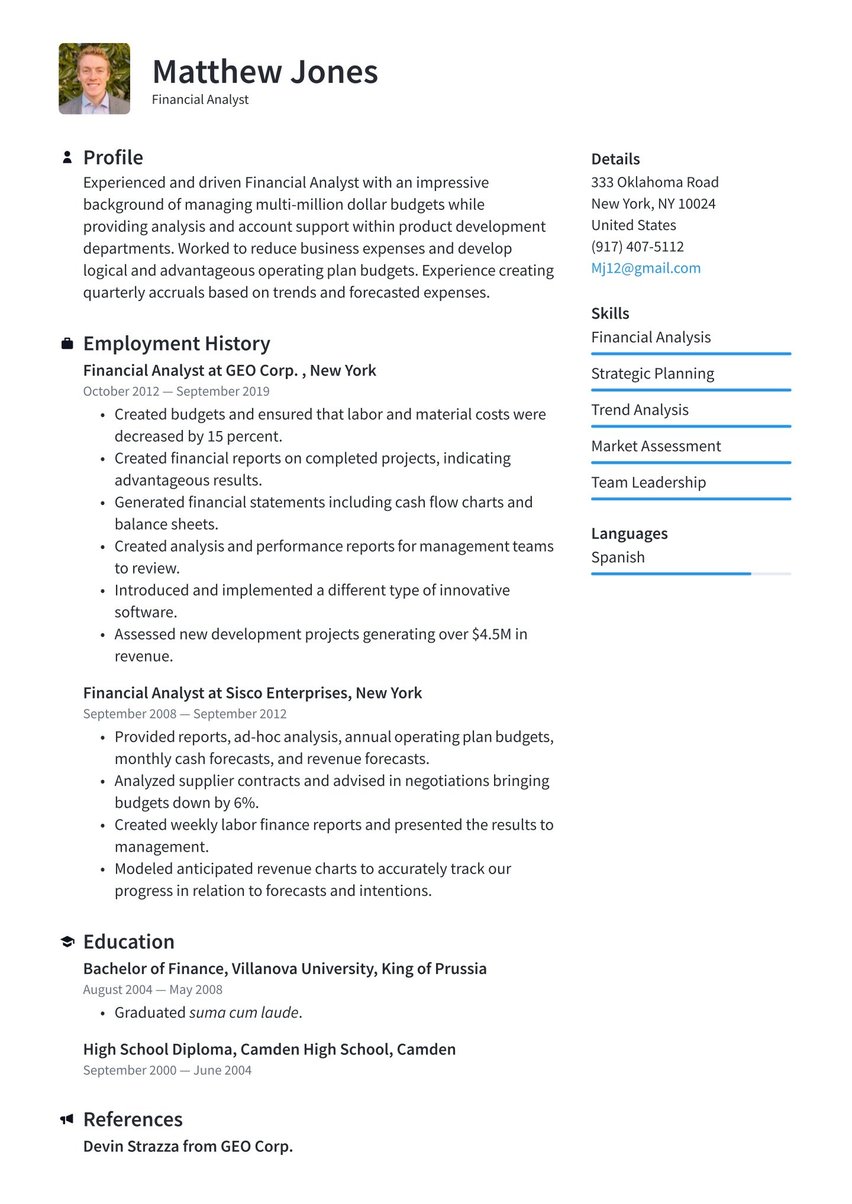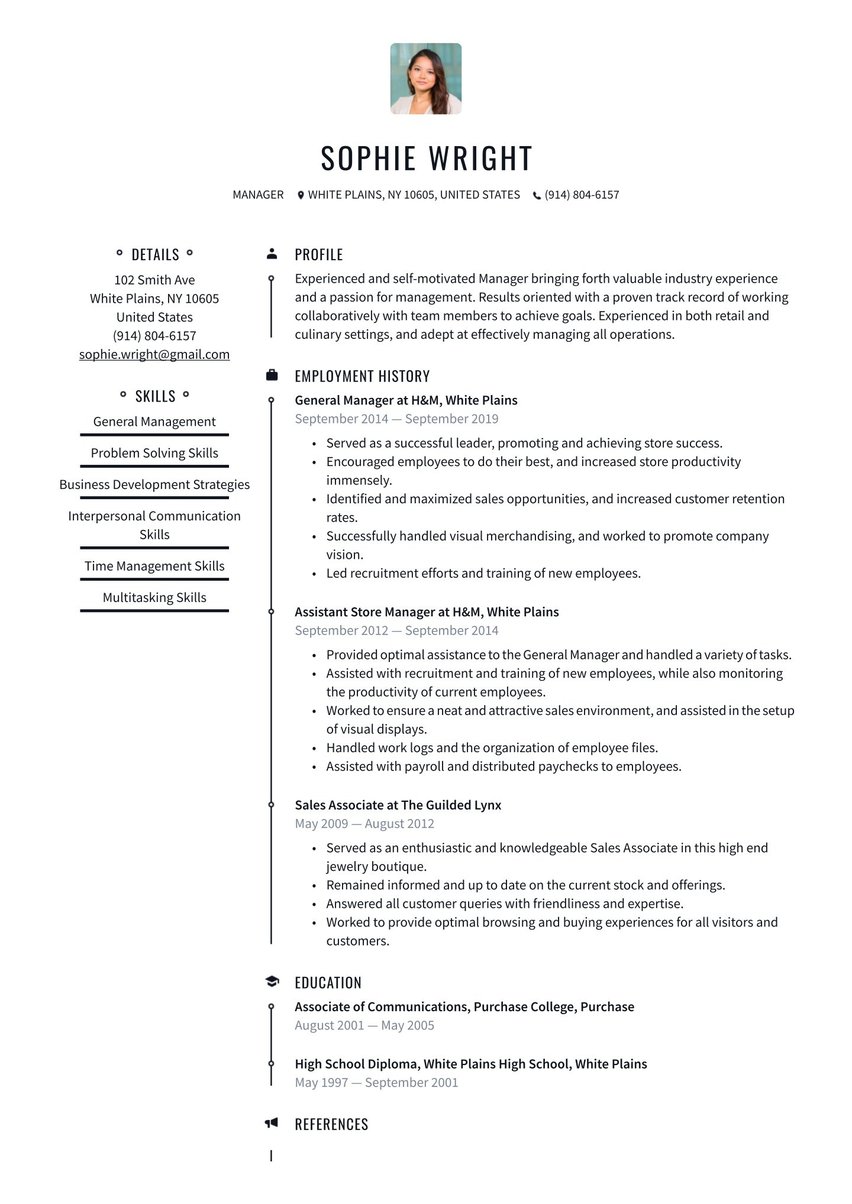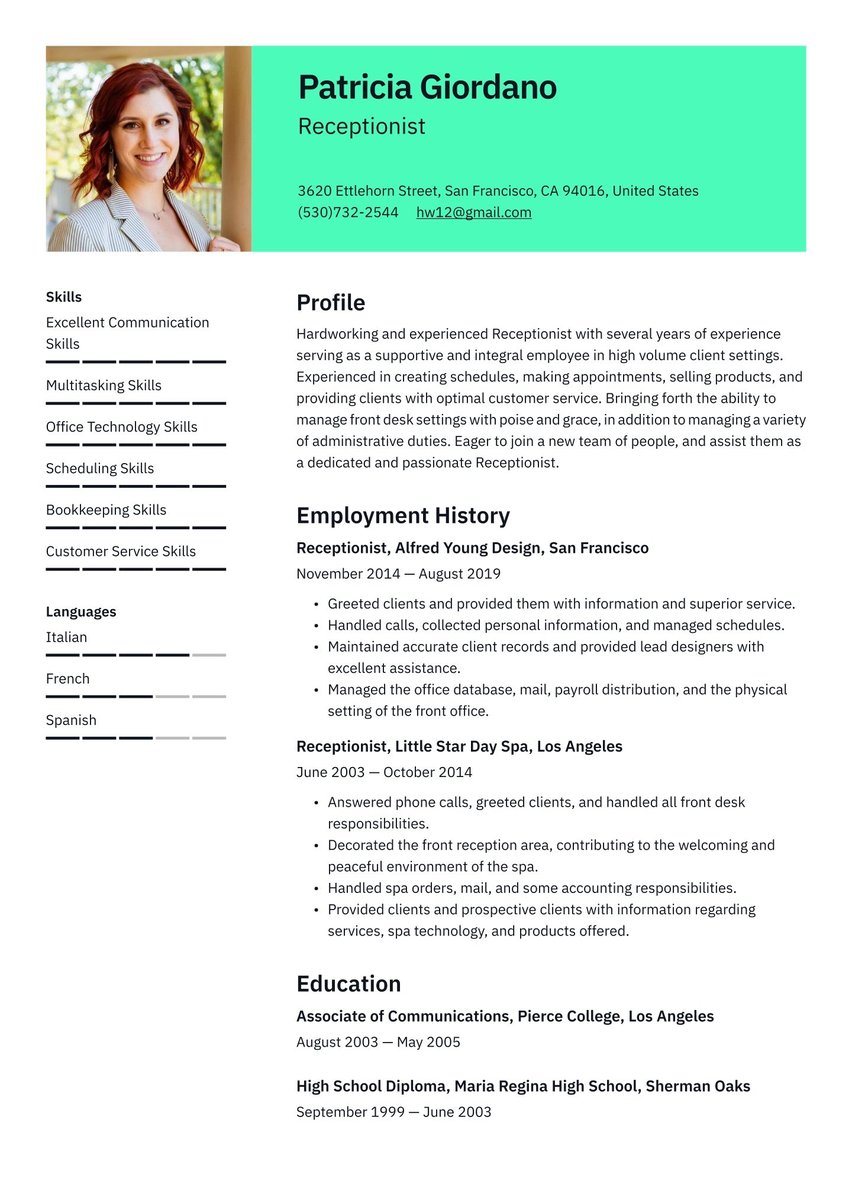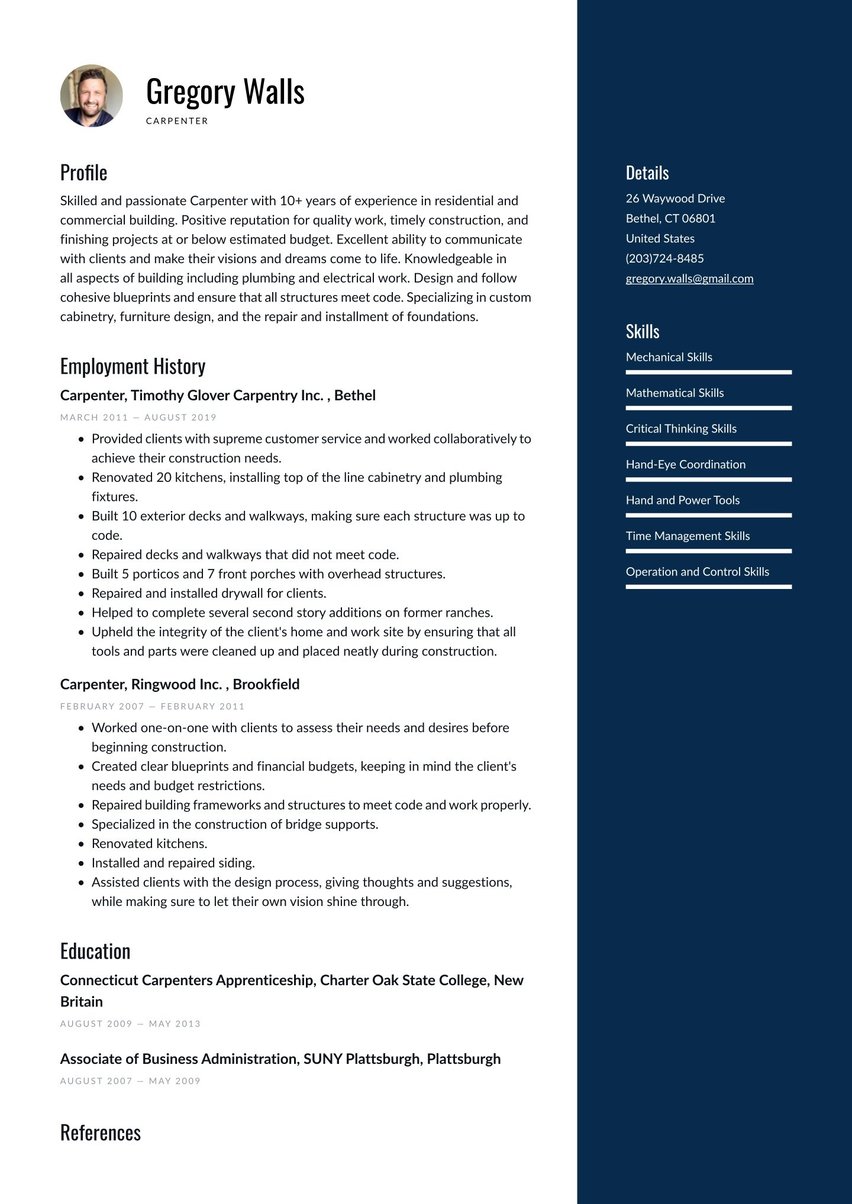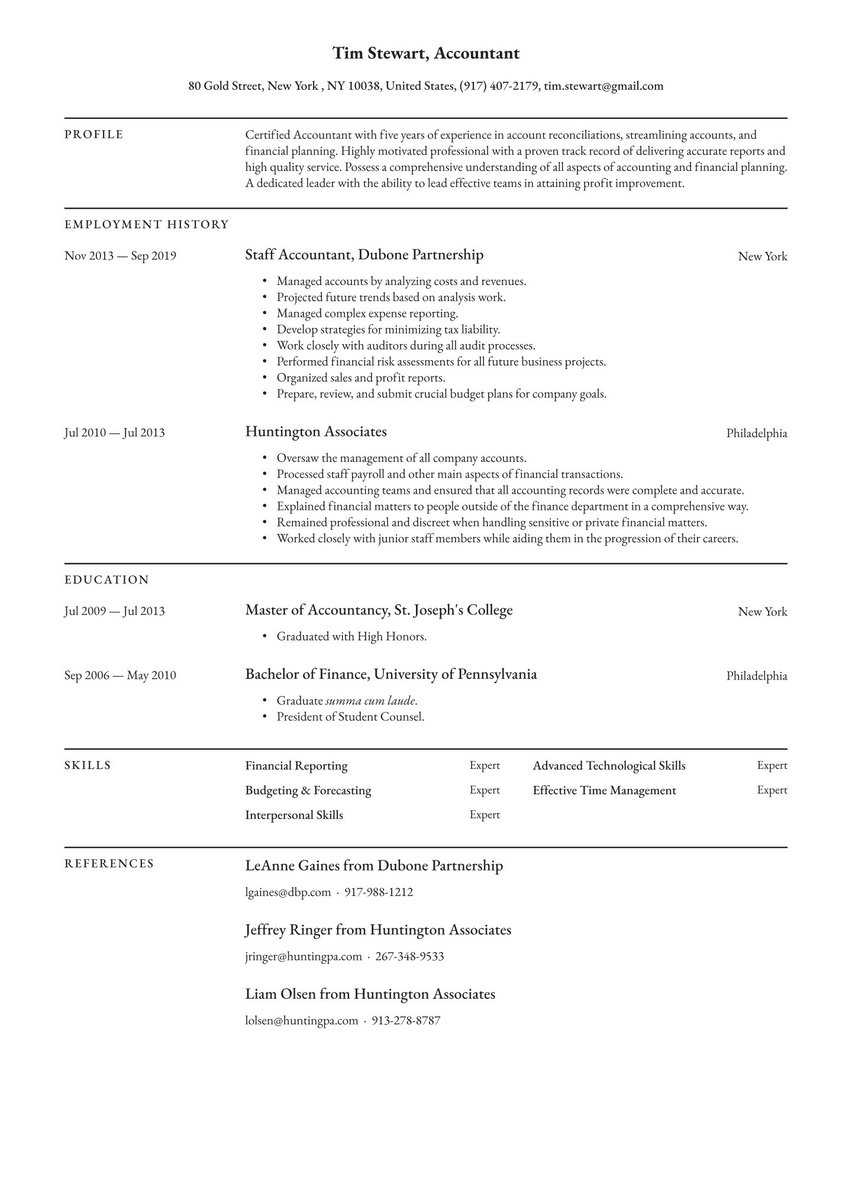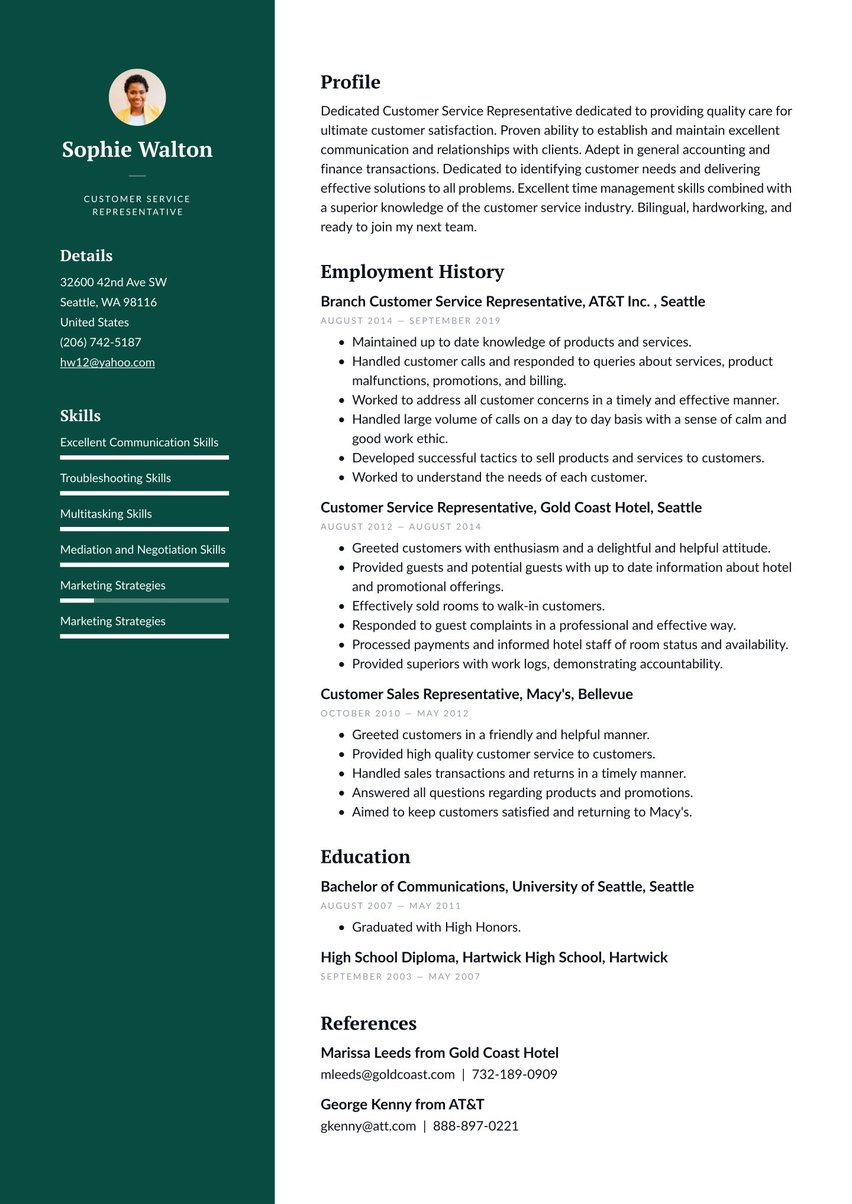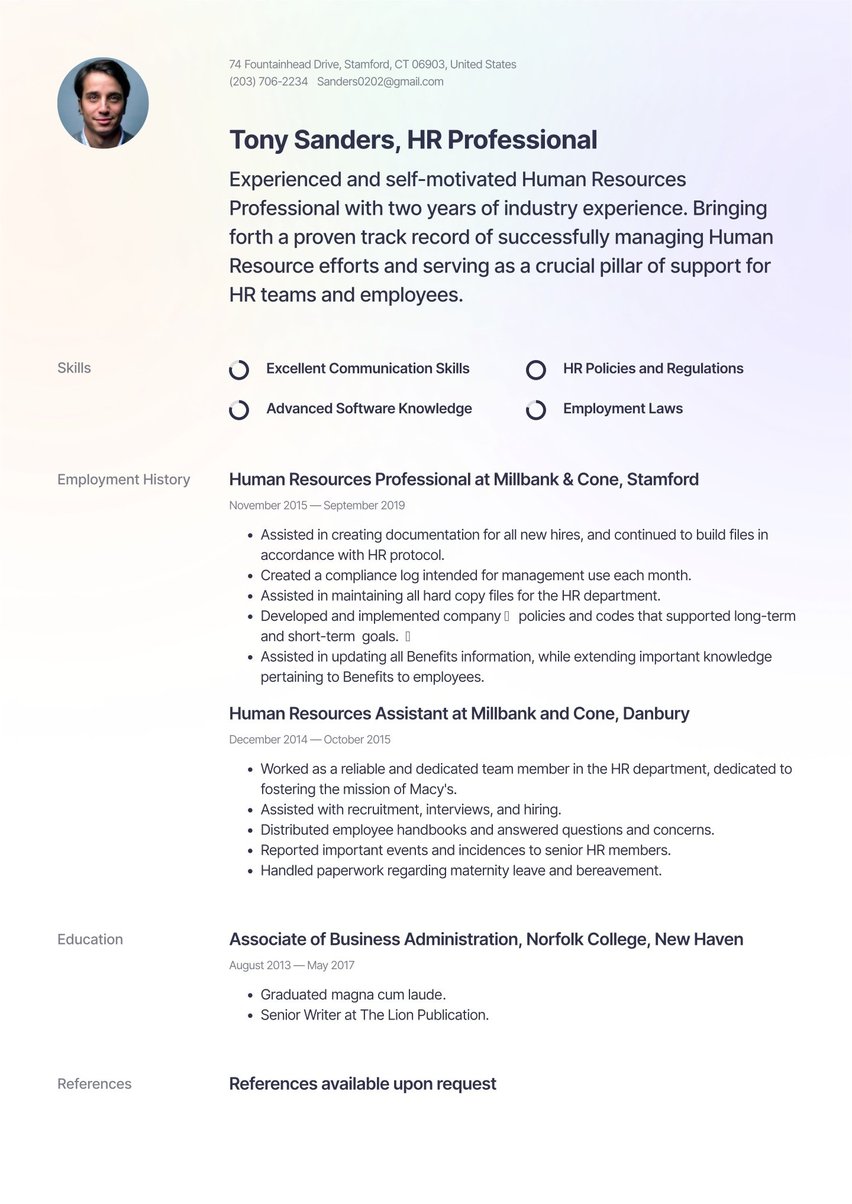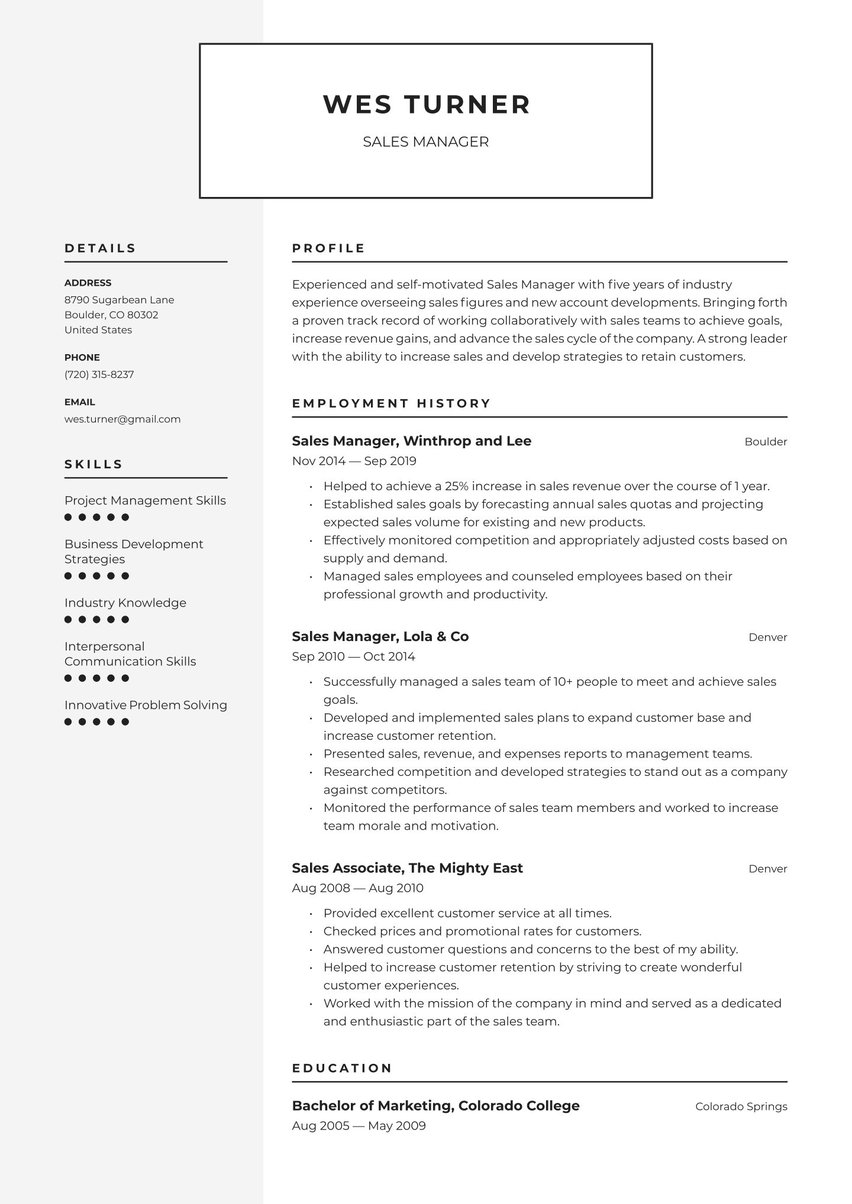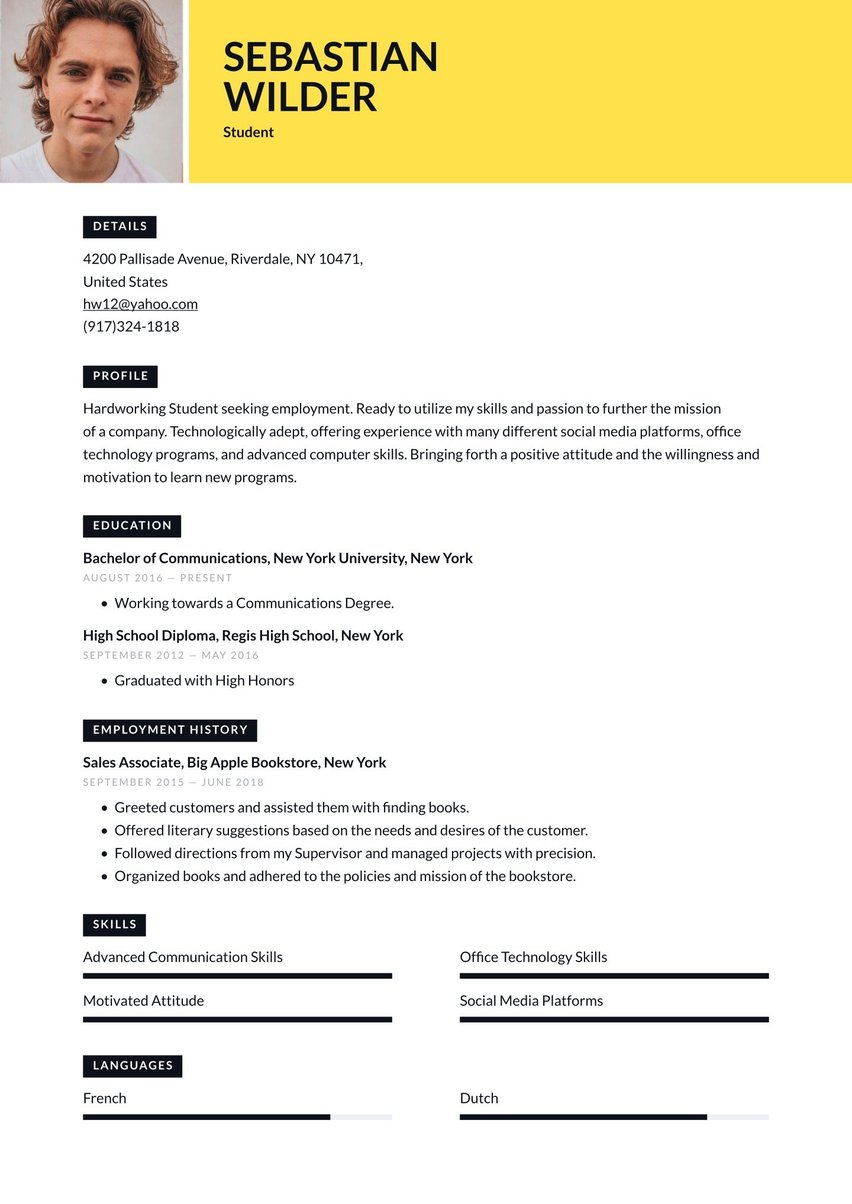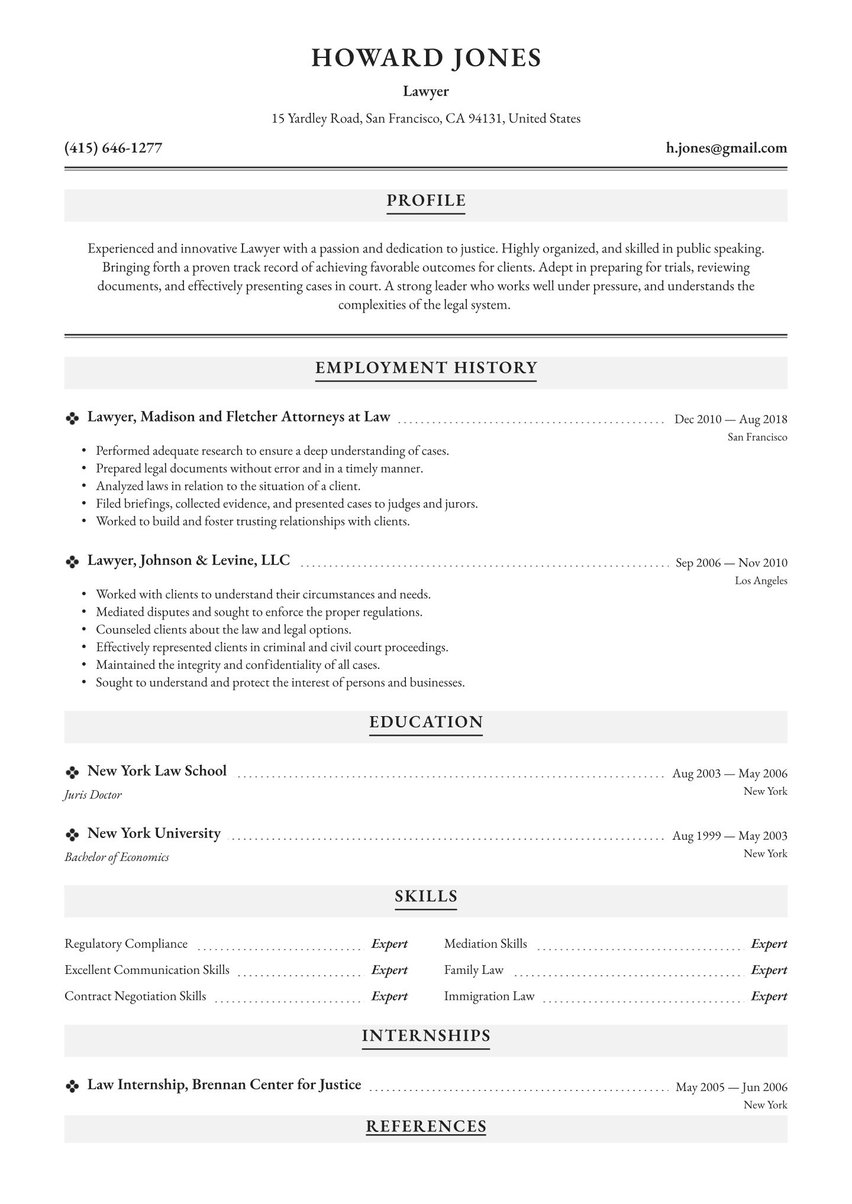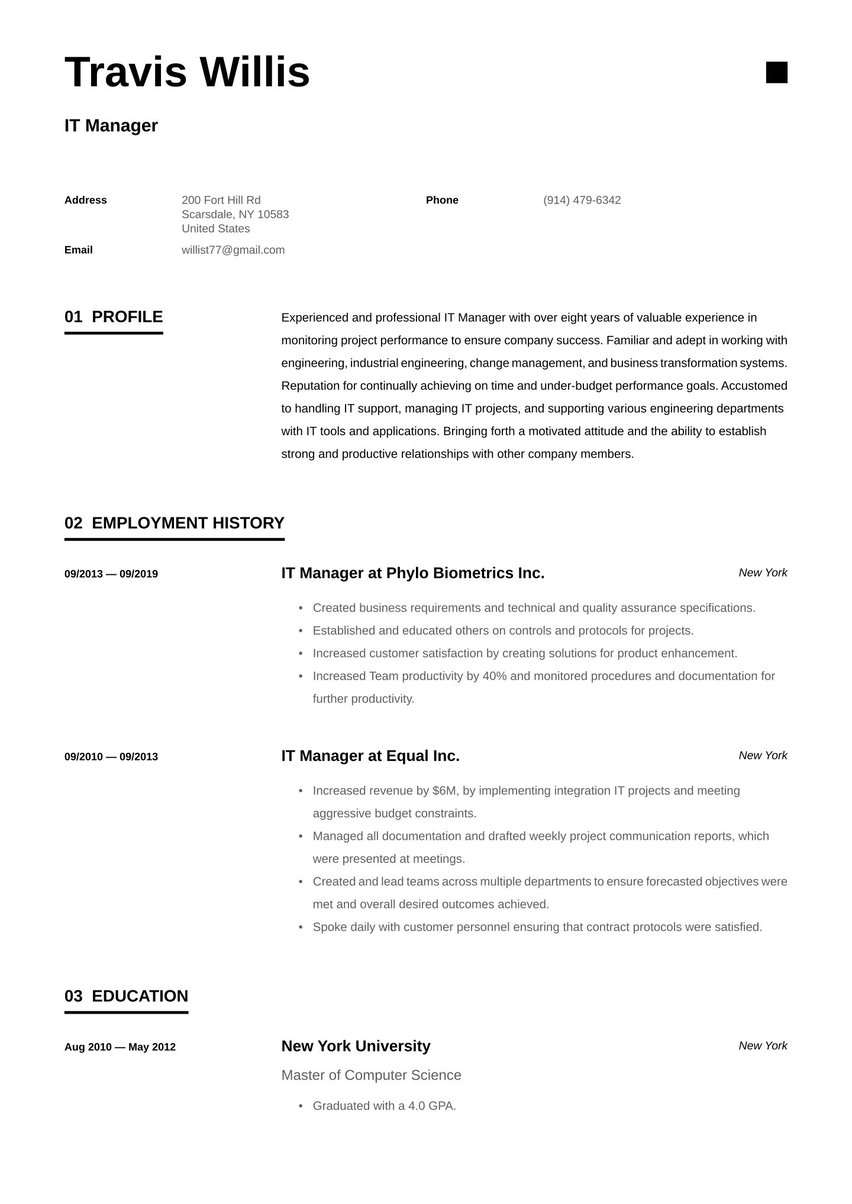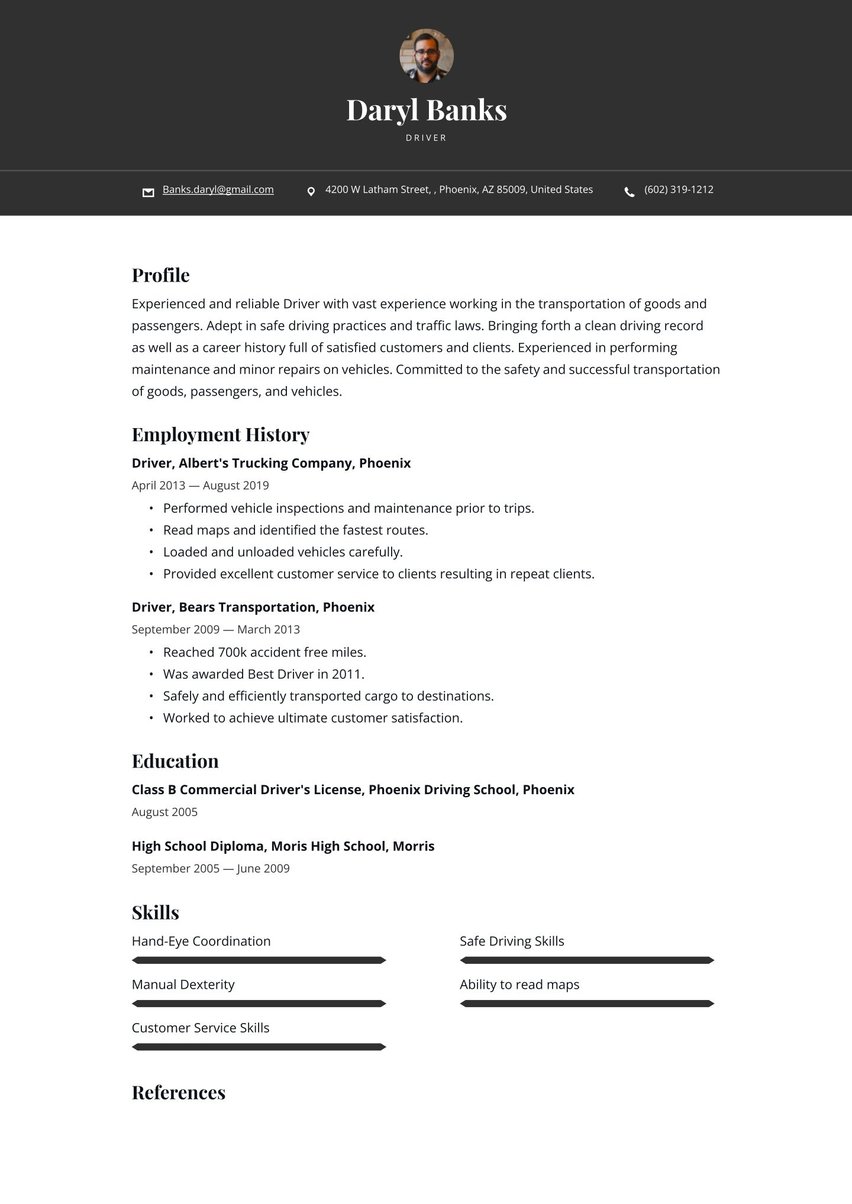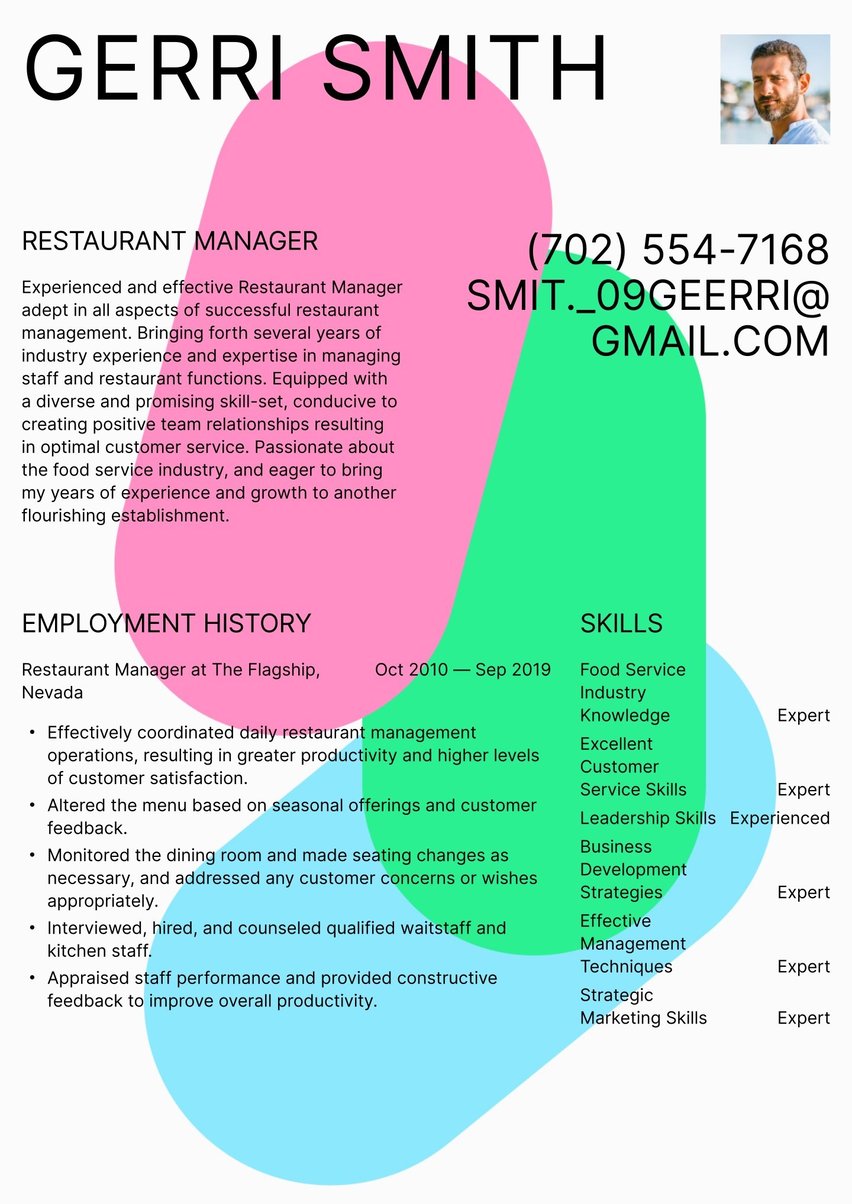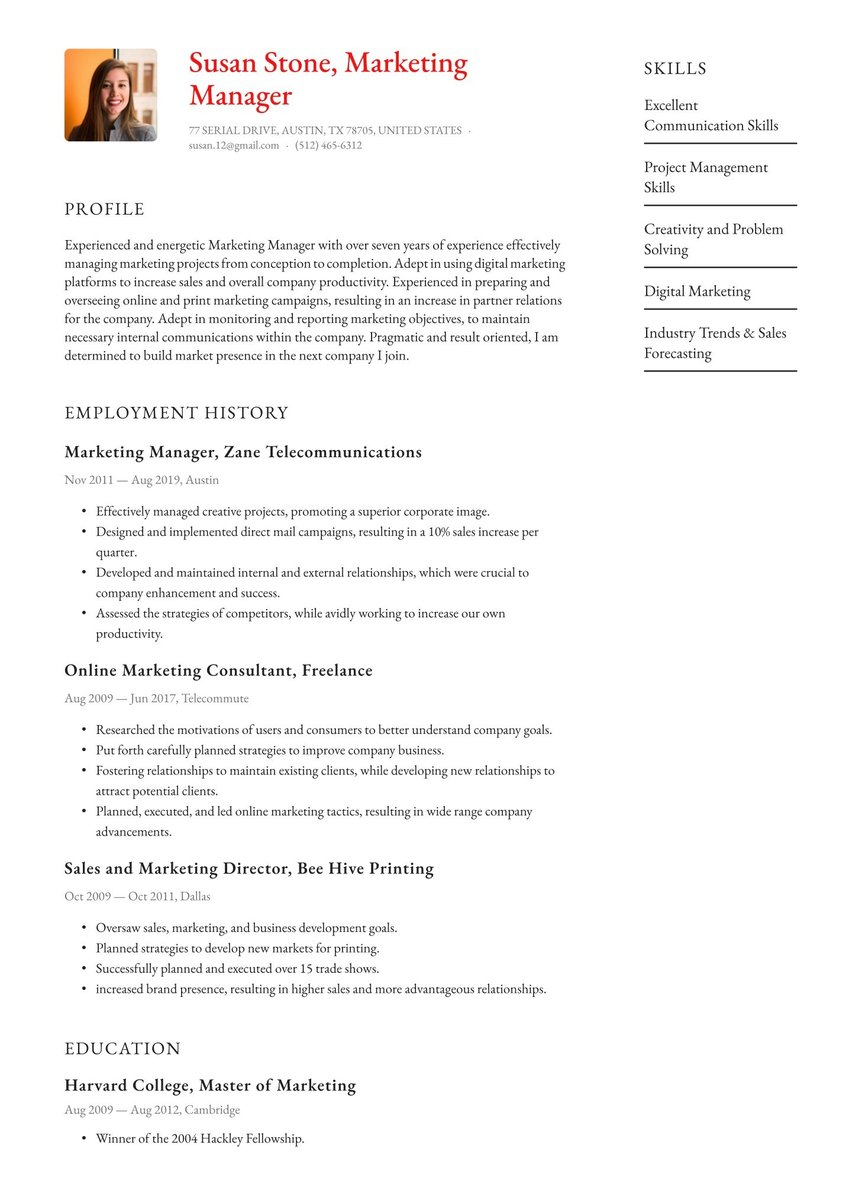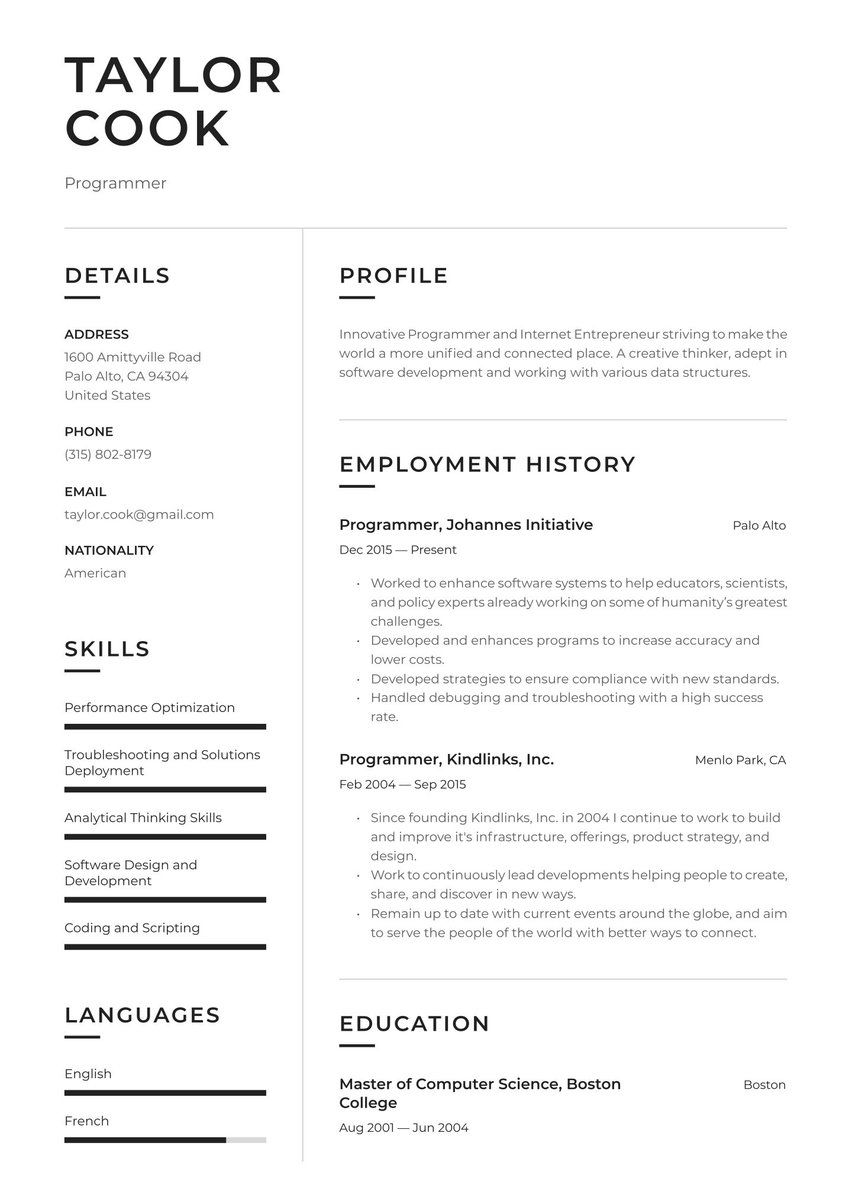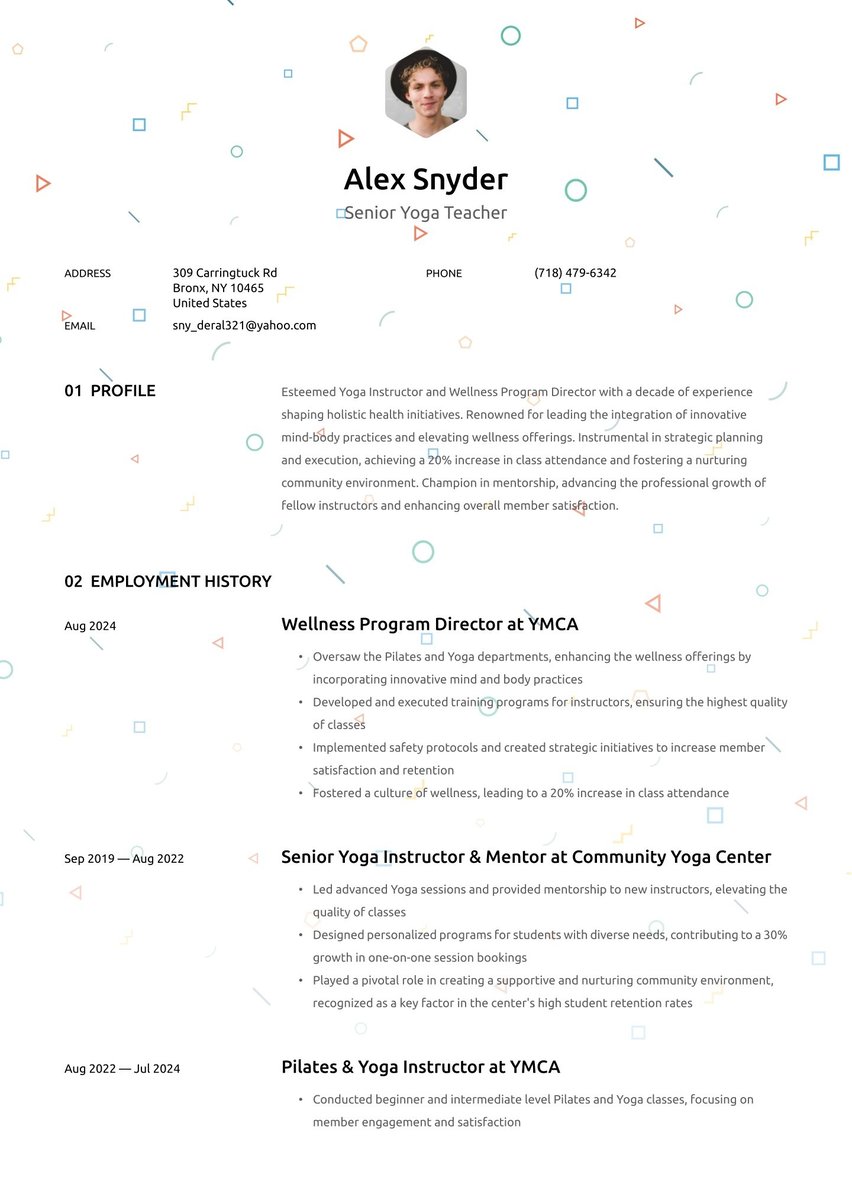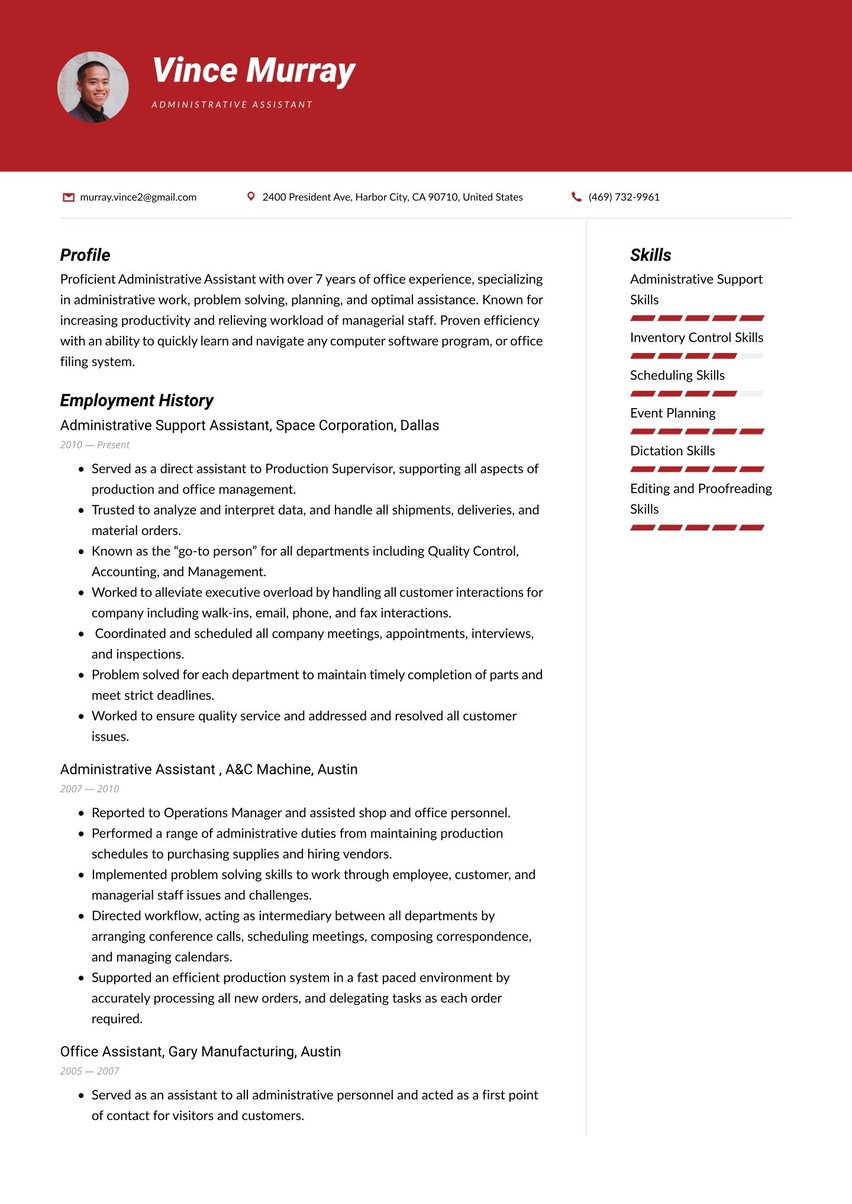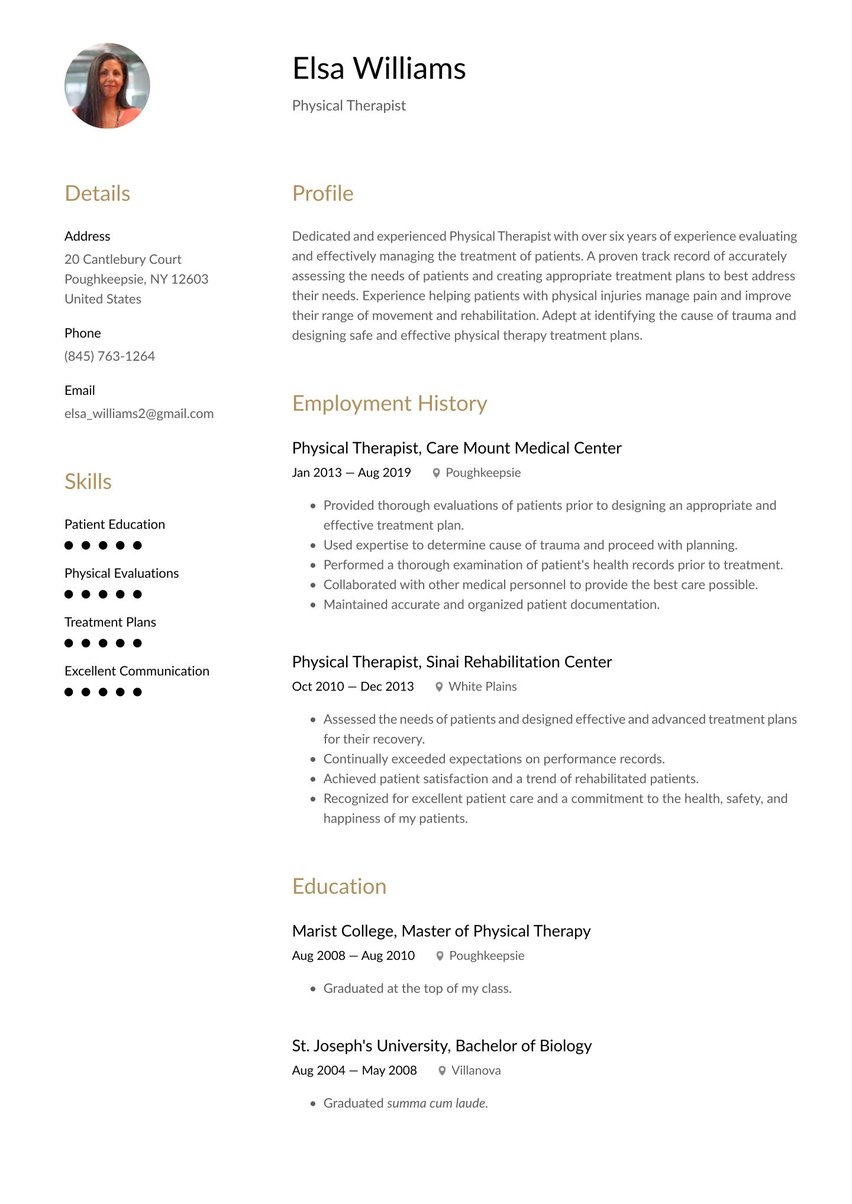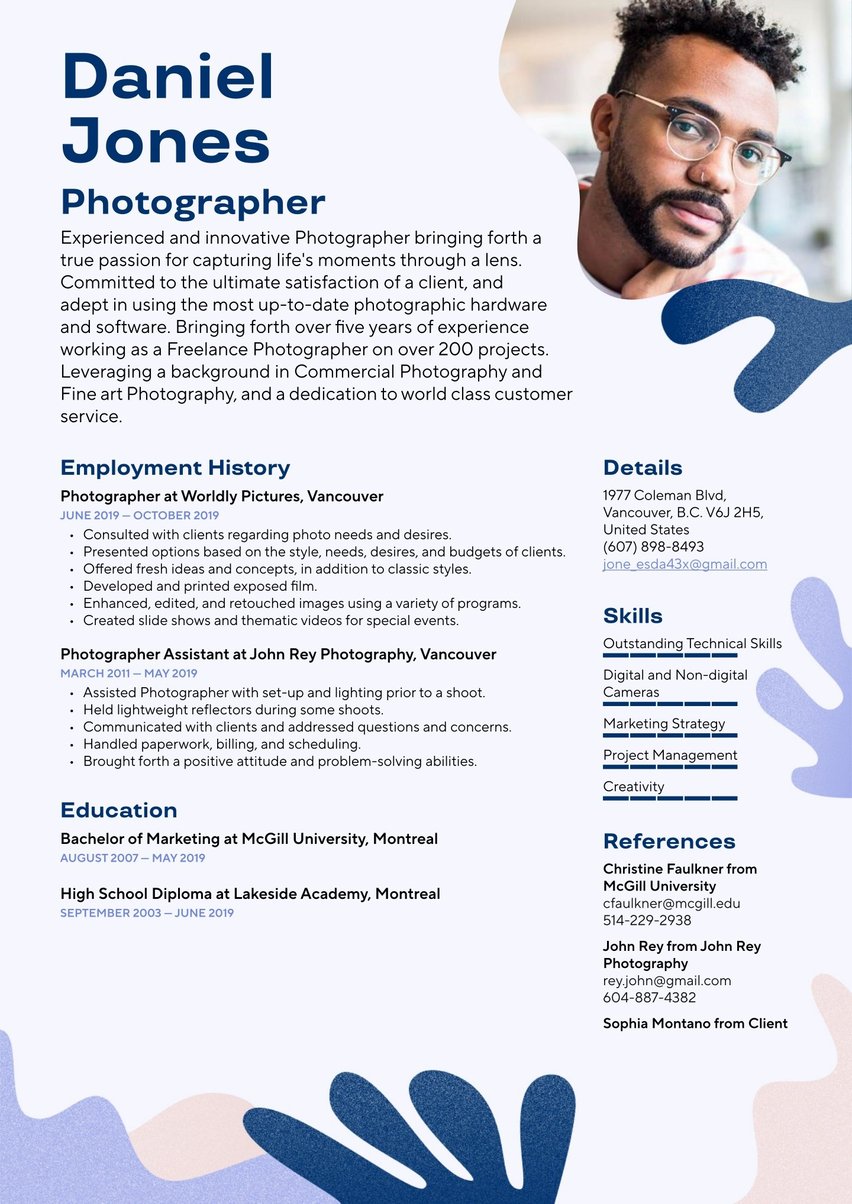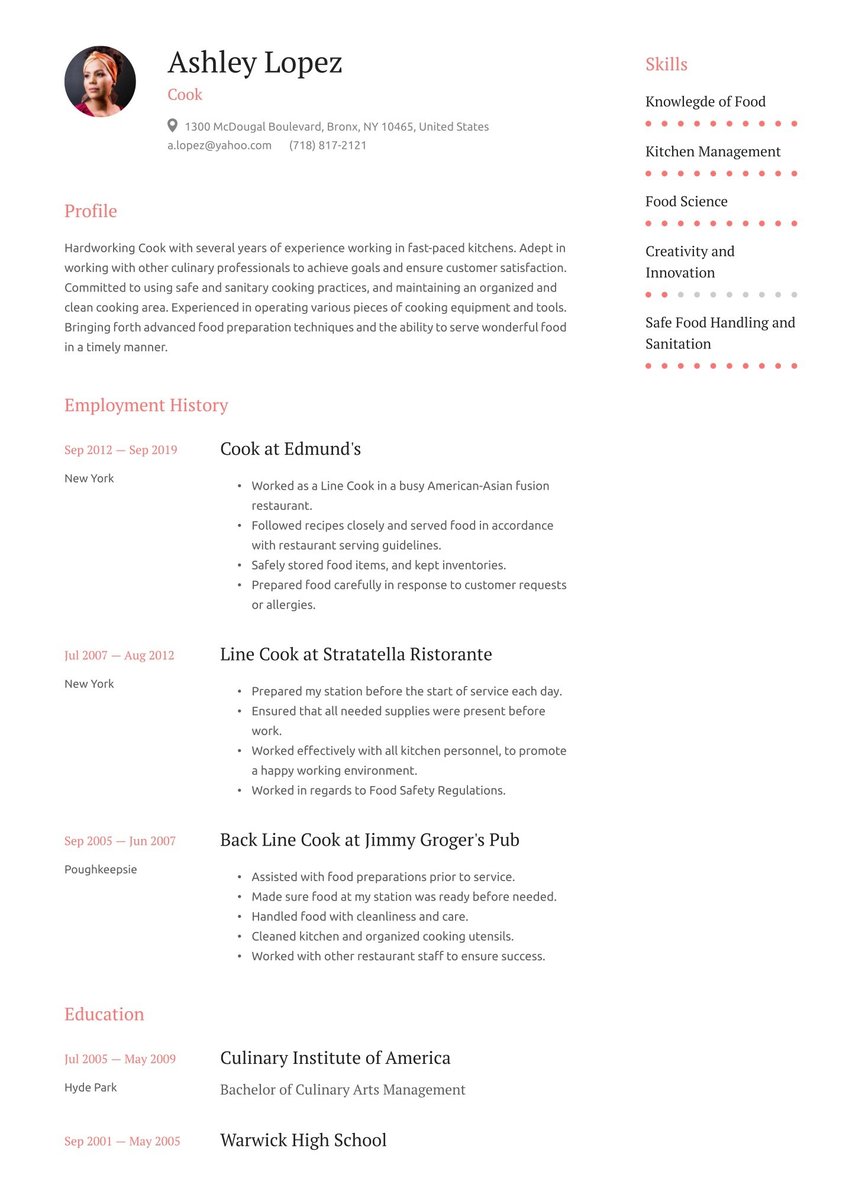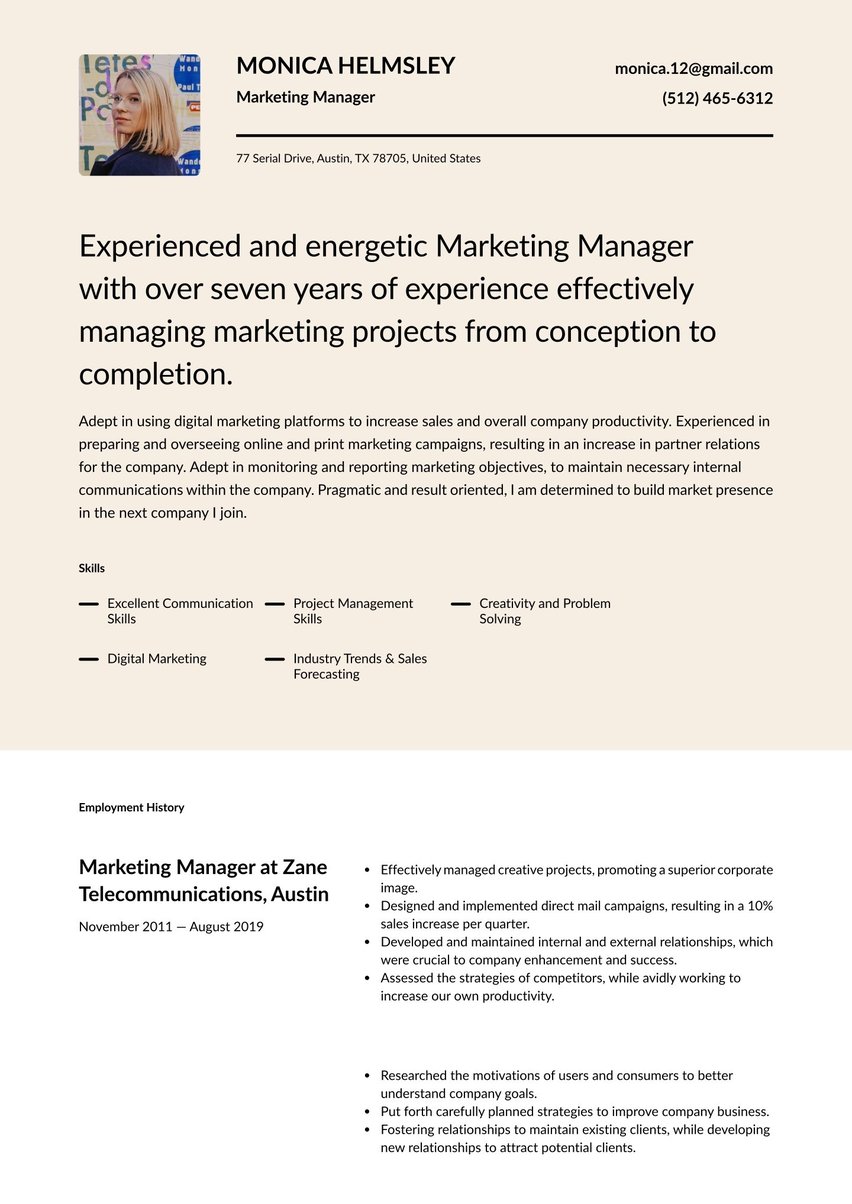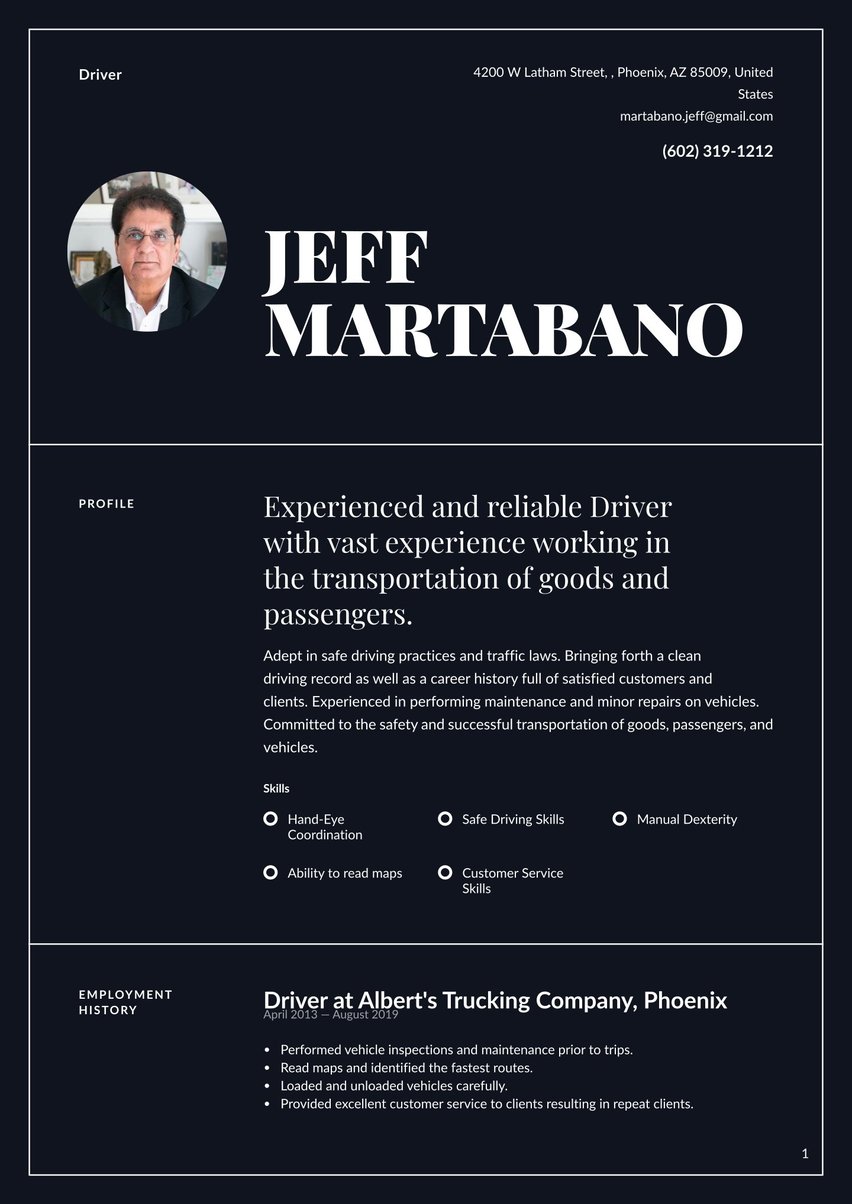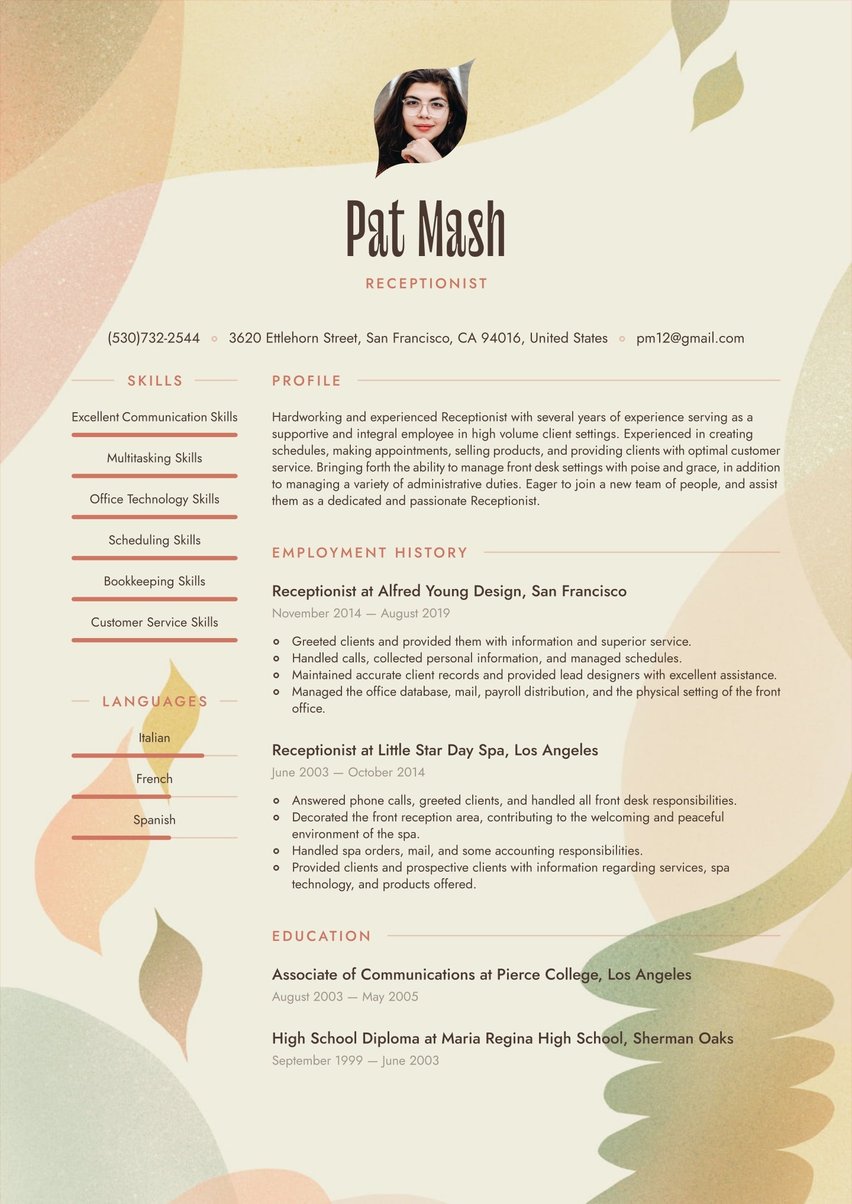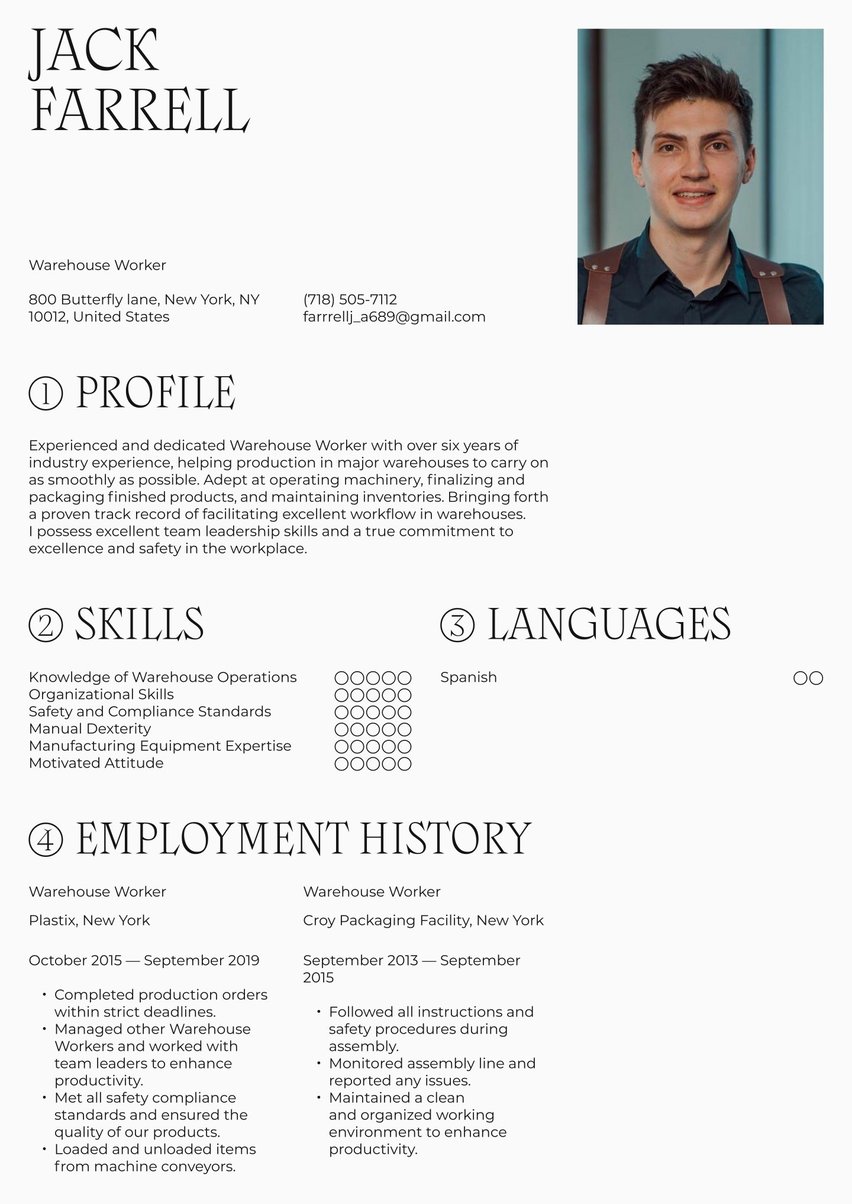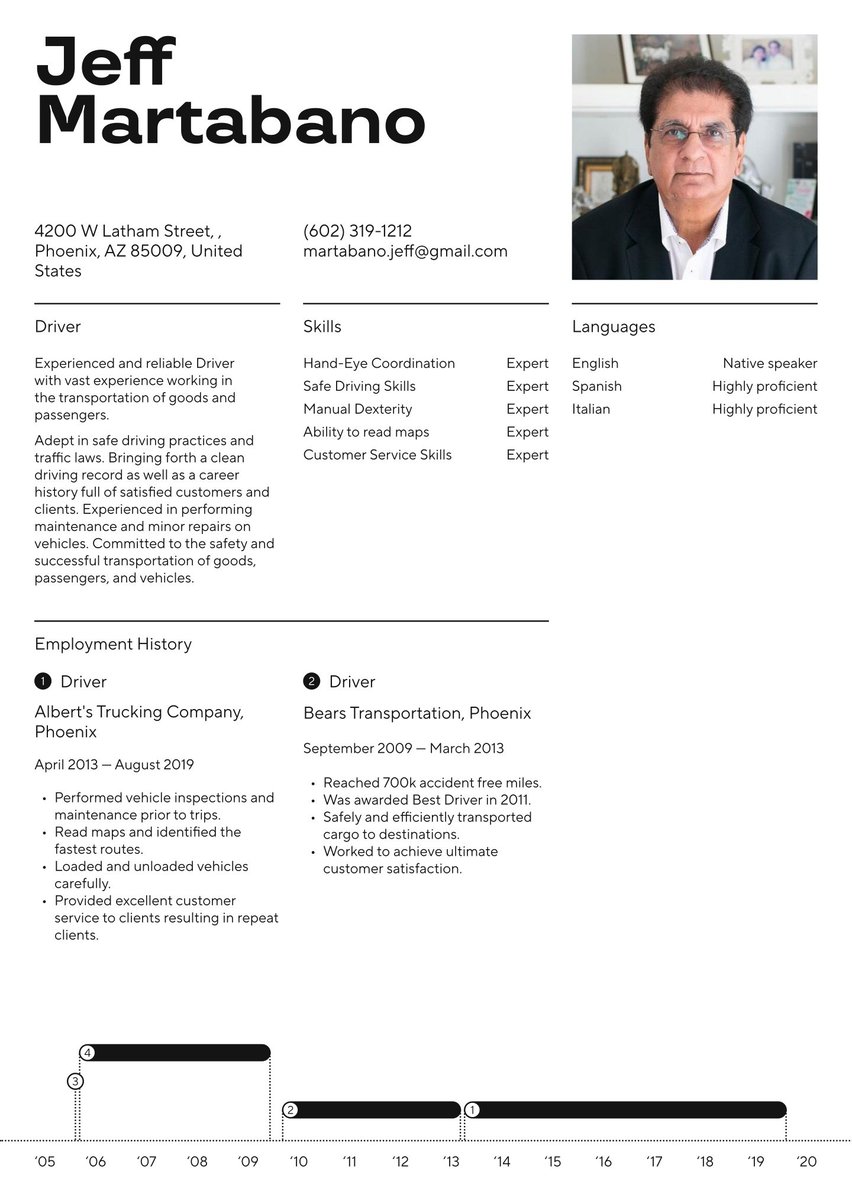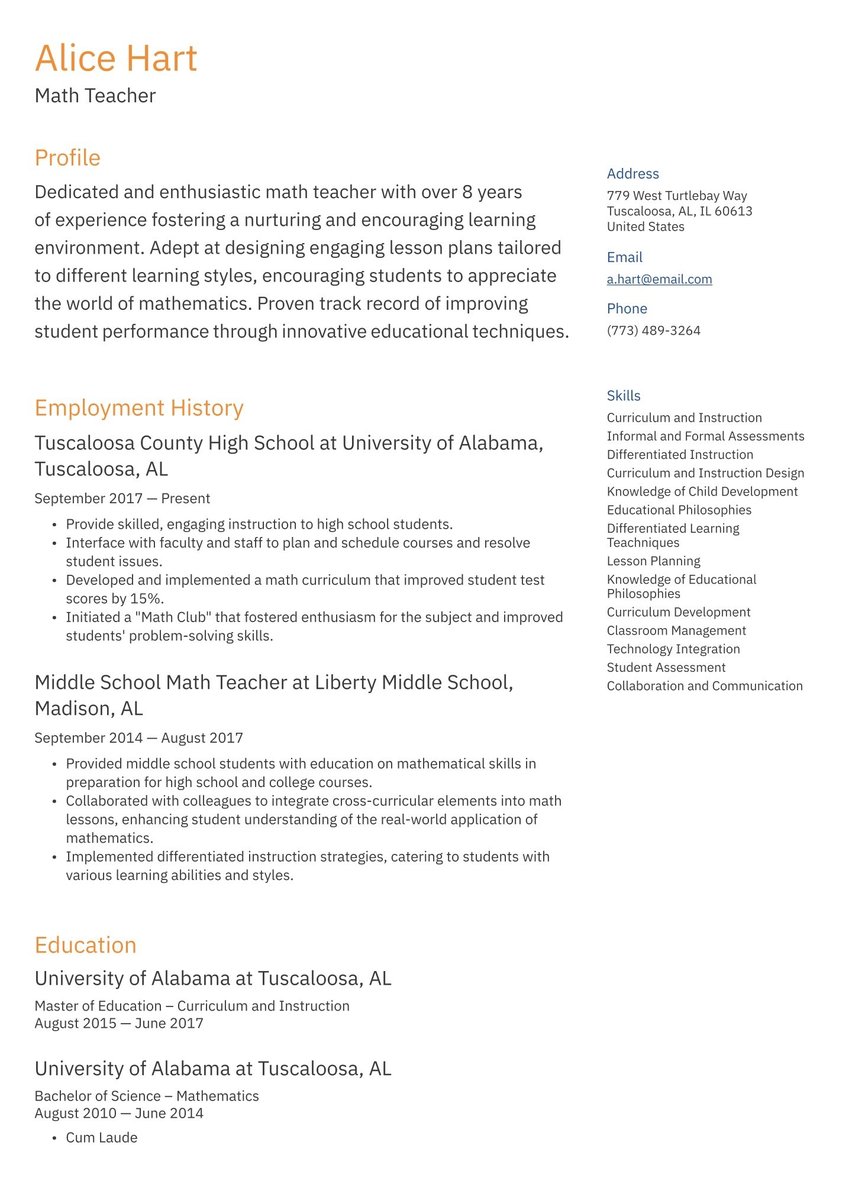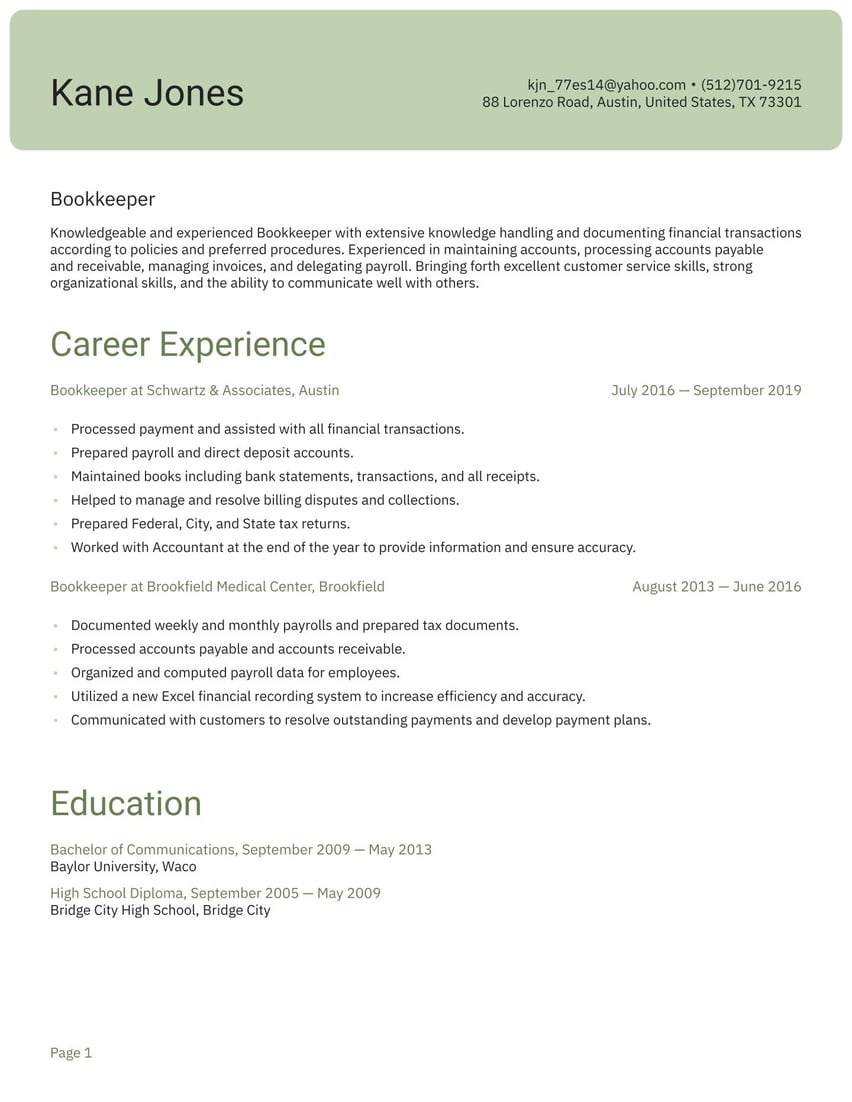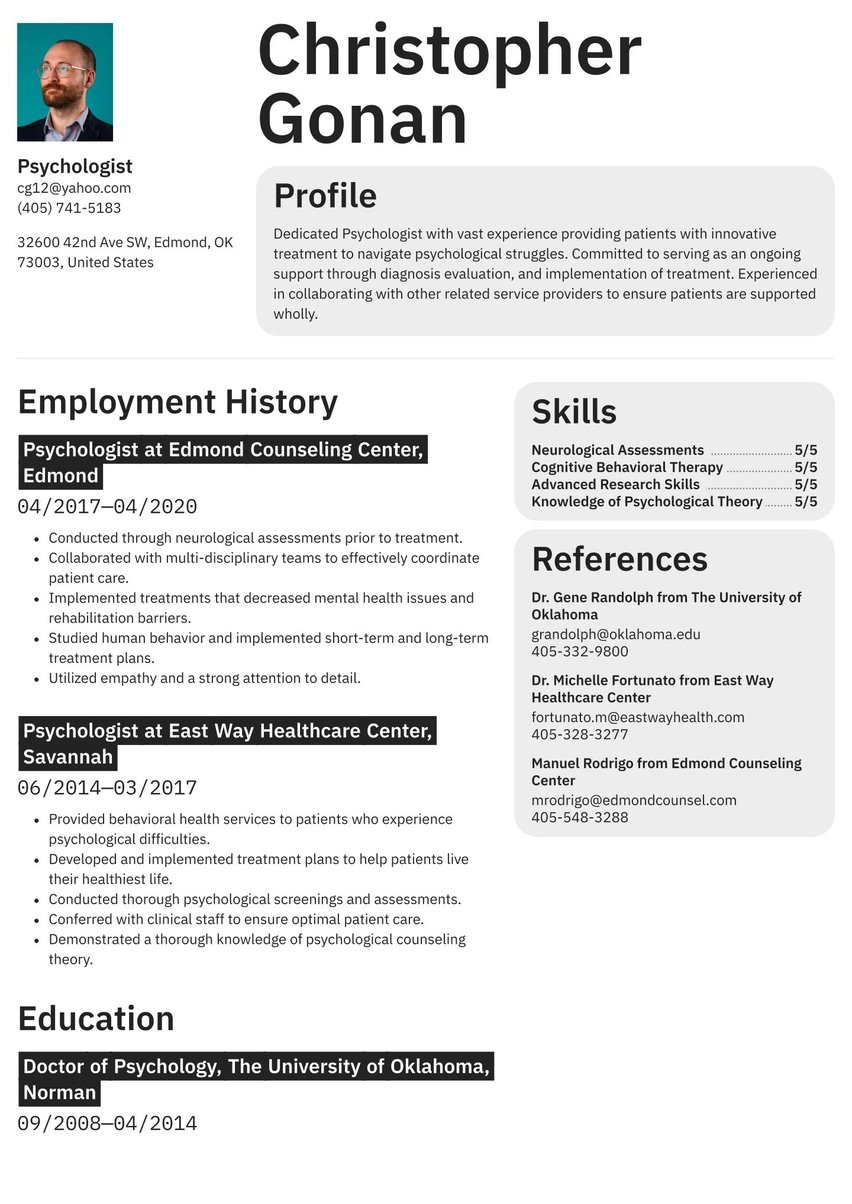Experienced Graphic Designer adept in creating powerful visual designs using digital illustrations, images, and typography. Committed to helping clients shape their brand identity through the use of compelling graphic designs. Accustomed to collaborating with creative professionals to achieve goals.
09/2019 - 02/2021, Graphic Designer, First Run Creative , New York
- Worked directly with clients to produce appealing and compelling presentations that engaged target audiences.
- Utilized extensive knowledge of Keynote, PowerPoint, and Adobe Creative Suite.
- Brought forth advanced experience working with typography and graphic design principles.
- Created designs for different screen types and media platforms.
- Successfully packaged and optimized presentations for ultimate client satisfaction.
05/2016 - 08/2019, Graphic Designer, Outlook Media , New York
- Developed a strong working knowledge of our client's brand.
- Worked collaboratively with team members to produce work in an efficient manner.
- Remained committed to producing quality content in accordance with deadlines.
- Worked to ensure that client brand standards were upheld.
- Utilized knowledge of typography, grid systems, and page layout.
09/2012 - 05/2016, Bachelor of Graphic Design, Purchase College , Harrison
09/2008 - 05/2012, High School Diploma, White Plains High School, White Plains
- Adobe InDesign
- Digital Photography
- Graphic Design Principles
- Adobe Photoshop
- Effective Time Management
Graphic designers possess what is known as “visual intelligence”—the smarts to produce compelling information design and illustration, presented in an eye-catching way.
Graphic Designer resume examples by experience level
UX Designer
Illustrator
Visual Artist
Motion Graphics Artist
If you’re a graphic designer, these skills will come in handy in producing what may be your most important work of art—the resume that lands you your dream job.
For example, a graphic designer can effectively convey a message with an image. It’s the same idea with your resume. If it doesn’t present a clear picture of who you are as a professional, you won’t make it past the hiring manager’s desk.
Make a great first impression with a graphic designer resume that gets you noticed.
Resume guide for a graphic designer resume
Here at Resume.io, we have everything you need to create the professional future of your dreams with a library of more than 500 resume examples, and our Resume Builder makes creating the perfect resume easier than ever.
Within this writing guide and the accompanying resume example, we will explore the following topics:
- How to write a graphic design resume
- Choosing the right resume format for graphic design
- How to add your contact information
- Using summaries
- Adding your graphic design experience
- Listing education and relevant experience
- Picking the right resume design/layout
- What the graphic design market looks like, and what salary you can expect
How to write a graphic designer resume
The very first step in writing your graphic designer resume is understanding what sections to include. Your resume should contain the following elements:
- The resume header
- The resume summary (aka profile or personal statement)
- The employment history section
- The resume skills section
- The education section
A job application is like creating a logo. In essence, you’re promoting your professional brand to the potential employer. To create a persuasive narrative, gather as much information as possible about the job you’re applying for, the company, and the people doing the hiring.
Identify the company’s graphic art needs and showcase how you’re the person who can fulfill those needs. That’s your unique selling proposition that lies at the core of your professional pitch.
This sales pitch starts with your resume. To close the deal, stick to this winning formula:
- Highlight accomplishments rather than responsibilities. Everyone can list what tasks they were assigned. But what did you accomplish in your past roles? What value did you bring to your past employers? This applies to every section of your resume.
- Adapt each version of the resume you submit to a specific employer. Adjust the style and tone to that of the agency in the same way you adjust your approach based on the customer you’re designing for.
- Convey a professional image with a resume template designed to be polished without being overly formal or stuffy. Since graphic design is a creative field, you can add a little “flair,” but don’t go overboard.
- When submitting online, optimize your resume with appropriate keywords so it won’t be filtered out by ATS screening software. Consider using an ATS resume template.
Optimize for the ATS
ATS stands for Applicant Tracking Systems, and it’s used by most companies. ATS algorithms scan resumes for keywords—usually matching the job description—and rank them by keyword inclusion. Only the highest-ranking resumes pass through to be reviewed by human hiring staff. The rest are eliminated.
For example, the graphic designer job posting lists the following requirements:
- “Graphic designer”
- “5+ years of experience”
- “Knowledge of illustration and typography”
- “Achieving strong brand identity”
- “Willing to collaborate with other teams”
Your resume profile summary, when integrating the keywords, could read:
“Experienced Graphic Designer adept in creating powerful visual designs using digital illustrations, images, and typography. Committed to helping clients shape their brand identity through the use of compelling graphic designs. Accustomed to collaborating with creative professionals to achieve goals.
Choosing the right resume format for graphic designers
Most of the time, you should use a reverse chronological format for your graphic designer resume. That means that you start with your most recent experience and certificates at the top of the page and work your way back in time as you move down.
However, there are exceptions to every rule. If you have worked as a freelance graphic designer, for example, or you're new to the career, a functional resume format may be more appropriate. This structure emphasizes your skill set and talents over the positions you've held.
Resume.io divides its resume templates into styles called Simple, Creative, Professional and Modern, and, of course, we have plenty of versions of the three formats available as resume examples. As a graphic designer, you might want to lean toward the creative templates, which have just a bit more visual pizzazz.
But even if you design your resume yourself, you need to think carefully about its format as the look of your resume should demonstrate to potential employers that you’re good at what you do.
Include your contact information
Any good design needs to include vital information about the client. For your resume, the header is the introduction to that information.
The top priority for your contact information is that it is at the top of your resume where it can easily be seen and professionally presented.
- Full name & title. List your first and last name. Use the title of the role you are pursuing, such as “Graphic Designer” or “Production Artist.”.
- Professional email address. Use a clean format like [email protected]. Ideally, this should be a separate email from your personal account..
- Phone number. List a number where you can be readily contacted, and make sure you have a professional voicemail greeting.
- Location. List only your city and state. Don’t list street address or zip code. It’s both outdated and unsafe. Note ' Willing to Relocate' here if applicable.
- LinkedIn. If your LinkedIn profile is active, relevant, and has a link to your online portfoliosho, include it here.
Don’t include:
- Date of birth: It’s irrelevant and could potentially lead to age discrimination.
- Personal details: Marital status, social security number, passport number, etc.
- A photograph. Again, this could lead to discrimination.
Include your online portfolio
Since graphic arts is a visual medium, it’s important that potential employers have the opportunity to see your work. Include a link for your online portfolio in your contact information, underneath your email and phone number.
Consider it a “secondary resume,” where you’ll include examples of your best work, areas in which you specialize, an overview of your work process, and your contact information. Make sure you keep your portfolio updated, adding new work every three to six months or so.
Make use of a summary
When creating a design for a client, you already have a good idea of the message you want to communicate. In the case of your resume, you want the hiring manager to get the message that you are the person who can help them create effective, timely designs to support their client’s brand message and goals.
Your resume summary serves the same purpose. In 2-3 sentences, you’re introducing yourself to the employer as the person who can help them create the best graphic designs. A well-crafted summary showcases your design talents and the value you bring, not just the daily tasks you performed on a daily basis. Think of it like a movie trailer—you want the reader to be intrigued and motivated to learn more about you.
Use action verbs in the simple past or present tense—demonstrated, initiated, created, shaped, , enhanced, expanded—and include quantifiable achievements where possible.
Resume summaries shouldn’t simply repeat highlights found elsewhere on the page. They present intersecting, overarching abilities and traits that make you good at what you do. In other words, they demonstrate your unique value proposition. For example, “Committed to helping clients shape their brand identity through the use of compelling graphic designs.”
This is your opportunity to present the image of yourself you want them to see, so it's crucial to be very clear about that image. Are you a basic black and white layout with consistent results or a vibrant, eye-catching logo that increases awareness and sales? Both have value but in different ways. The summary is where you define who you are.
Need inspiration for your summary? Check out our related resumes:
You can find adaptable graphic design resume examples summary below:
Emerging graphic designer with a foundation in digital design and brand identity, having supported teams in crafting engaging visual presentations. Skilled in Adobe Creative Suite and versed in typography and layout principles. Recognized for adaptability, collaboration, and a commitment to meeting tight deadlines while upholding brand consistency.
Experienced Graphic Designer adept in creating powerful visual designs using digital illustrations, images, and typography. Committed to helping clients shape their brand identity through the use of compelling graphic designs. Accustomed to collaborating with creative professionals to achieve goals.
Distinguished Graphic Designer with a proven record of spearheading teams to deliver innovative design solutions that resonate with audiences and strengthen brand presence. Renowned for advanced design leadership and strategic art direction, resulting in a 30% boost in efficiency and a 25% increase in client retention. Adept at mentoring talent and leading by example to drive project success and client satisfaction.
Outline your graphic design work experience
In this section, you’ll use the reverse chronological format, which means your current (or most recent) job is positioned at the top of this section, then work your way back to your first job. Don’t go back farther than 10-15 years (older experience can be placed in an “Additional Experience” section without dates). List experience that is relevant to the role you are applying for.
Under work heading, recount your contributions and accomplishments in concise bullet point statements, without using the word, “I.” Be specific and use powerful action verbs: designed, conceptualized, delivered, shaped, created, produced, illustrated, implemented, and consulted.
Instead of listing your day-to-day job duties, demonstrate outcomes, using quantifiable data when possible. For example, have you ever seen task-related statements like these in a graphic design resume?
- "Oversaw day-to-day production of design work."
- "Understanding client goals and desired outcomes."
- "Had an excellent record of client retention."
These statements are generic and they don’t demonstrate what you’ve accomplished in graphic design or what value you bring to the table. You want to show your results, not that you were a nine-to-five drone.
Replace these vague sentiments with results-based points. Put the highlight on results that you attained, either alone or with a team: client satisfaction, increase in customer engagement, and so on.
Beyond numbers, look at client figures like sales increases, stronger brand identity, client referrals, or increased presence in social media and different screen types.
Check out these reworked versions of the phrases above:
- "Worked directly with clients to produce appealing and compelling presentations that engaged target audience and increased brand awareness by 15%.”
- "Successfully packaged and optimized presentations for ultimate client satisfaction.”
- "Developed a strong working knowledge of our client's brand"
Take a look at the graphic design employment history resume sample below:
Graphic Designer at First Run Creative , New York
September 2019 - Present
- Worked directly with clients to produce appealing and compelling presentations that engaged target audiences.
- Utilized extensive knowledge of Keynote, PowerPoint, and Adobe Creative Suite.
- Brought forth advanced experience working with typography and graphic design principles.
- Created designs for different screen types and media platforms.
- Successfully packaged and optimized presentations for ultimate client satisfaction.
Graphic Designer at Outlook Media , New York
May 2016 - August 2019
- Developed a strong working knowledge of our client's brand.
- Worked collaboratively with team members to produce work in an efficient manner.
- Remained committed to producing quality content in accordance with deadlines.
- Worked to ensure that client brand standards were upheld.
- Utilized knowledge of typography, grid systems, and page layout.
Include the relevant key skills that make you a great graphic designer
In your skills list, combine hard and soft skills that showcase your comprehensive expertise. Hard skills like design software, typography, or even digital photography are clear advantages in your job search.
However, soft skills like time management, communication skills, and an awareness of current design trends shouldn’t be ignored as they they’re important to most employers and can help you stand out as a leading candidate.
The resume builder offers several pre-written key skills to choose from with proficiency ranges you can set. You can also write in your skills.
Here’s what the skills box looks like in our graphic designer resume template.
- Adobe InDesign
- Digital Photography
- Graphic Design Principles
- Adobe Photoshop
- Effective Time Management
The skills list isn’t the only place you can highlight your key skills. Incorporate them throughout your resume by describing how you used those skills on the job.
Give these skills more weight by providing specific examples accomplishments and achievements:
For example, in your work experience section and professional summary, highlight your
- Strong design principles. Demonstrate your knowledge of how shape, color, form, and typeface work together to create an effective, cohesive design.
- Examples of effective branding to create branding that speaks to both the client and the potential customer and works across all platforms.
- Graphic design software. Designers must have up-to-date knowledge of the most-used design software, such as Adobe Photoshop, InDesign, or Sketch.
Look to the job description as a guide for what key skills to include.
Soft skills vs hard skills
Graphic design is thought of as a technical position using a variety of software and tools to get the job done. Increasingly, soft skills are also becoming vital to landing a position in this industry.
Soft skills such as communication, time management, and problem solving are sought after by employers. In fact, in a survey by the Interaction Design Foundation, 73 percent of employers chose communication and problem solving as their most sought-after skill set.
Detail your education & relevant graphic designer certifications
The education section is pretty straightforward for graphic design roles. Simply list your academic achievements, in reverse chronological order.
Since most graphic designer positions require a college degree in graphic design or other art disciplines, remove your high school education and start with college degrees.
Beyond formal education, this section is a great opportunity to list certifications or training relevant to graphic design. For example,
- Training and certifications. Courses, workshops, or even webinars that enhance your skills in graphic design.
- Internships. University or company-sponsored training or internships. Training in other industries can also be helpful if it adds to your value as a designer.
- Professional development. Organizations such as AIGA offer courses in graphic design to keep designers’ skills sharp and up to date.
Remember, if your education or training is particularly impressive or more relevant than your work experience, consider placing this section before your employment history. This is known as a functional resume that emphasizes your qualifications and shows your commitment to professional growth in graphic design.
What if your graphic designer work history is made up of freelance gigs?
Don’t worry, that’s not an obstacle. You just need to apply some creative thinking to how you format/structure this section. There are a couple of options:
- Add your largest freelance gigs as projects, but in the same format as formal job positions (mention the dates and add bullet points below describing project accomplishments, milestones and relevant facts).
- If your freelance projects are in the minority, you can either omit the months in the dates and/or note “Freelance project” in parenthesis next to your project role.
- “Self-employed” is another way to note your freelance work when it doesn’t compose the majority of your career history. Mention the years and add your major projects as bullet points below. You can see examples of this all over LinkedIn in freelancer profiles.
Don’t just say where you worked or for how long, but be specific about what you did at each of these jobs, using facts and figures wherever possible. Use bullet points and strong action verbs to describe your specific achievements in freelancing, accomplishments and milestones.
Bachelor of Graphic Design, Purchase College , Harrison
September 2012 - May 2016
High School Diploma, White Plains High School, White Plains
September 2008 - May 2012
Pick the right resume layout and design for a graphic designer resume
When you create a brand logo for a client, you need it to be eye-catching, appropriate, and entice the potential customer to learn more about the company.
The design of your resume serves the same purpose. Graphic design is your bread and butter. That means that hiring managers will judge your resume more harshly than usual. It should be eye-catching, use professional fonts and white space, and incorporate color judiciously.
For a graphic designer resume, we recommend clean lines for separating sections, a modern but readable font and limited color and graphics. You’re a creative professional who creates art, and your resume design should embody that—within reason. The graphic designer resume sample here, for example, makes use of our Dublin template—a sleek, clean layout with white lines and green blocks.
There may not be shortcuts to a properly crafted resume, but there are express lanes like our field-tested resume templates, where the most tedious formatting and structure tasks are already taken care of.
Graphic designer text-only resume example
Profile
Experienced Graphic Designer adept in creating powerful visual designs using digital illustrations, images, and typography. Committed to helping clients shape their brand identity through the use of compelling graphic designs. Accustomed to collaborating with creative professionals to achieve goals.
Employment history
Graphic Designer at First Run Creative , New York
September 2019 - Present
- Worked directly with clients to produce appealing and compelling presentations that engaged target audiences.
- Utilized extensive knowledge of Keynote, PowerPoint, and Adobe Creative Suite.
- Brought forth advanced experience working with typography and graphic design principles.
- Created designs for different screen types and media platforms.
- Successfully packaged and optimized presentations for ultimate client satisfaction.
Graphic Designer at Outlook Media , New York
May 2016 - August 2019
- Developed a strong working knowledge of our client's brand.
- Worked collaboratively with team members to produce work in an efficient manner.
- Remained committed to producing quality content in accordance with deadlines.
- Worked to ensure that client brand standards were upheld.
- Utilized knowledge of typography, grid systems, and page layout.
Skills
- Adobe InDesign
- Digital Photography
- Graphic Design Principles
- Adobe Photoshop
- Effective Time Management
Education
Bachelor of Graphic Design, Purchase College , Harrison
September 2012 - May 2016
High School Diploma, White Plains High School, White Plains
September 2008 - May 2012
Graphic designer job market and outlook
The median annual salary for graphic designers in the United States was $58,910 in May 2023, according to the Bureau of Labor Statistics. Of course, many graphic designers work on an hourly rate instead. The average pay per hour for this job is currently set at $28.32.
There is not a large growth projection for graphic designers, with employment expected to grow three percent between 2022-2032, which is about as fast as other professions, with 22,800 openings projected yearly, on average, over the decade.
How much do graphic designers make?
Median annual wages for U.S. graphic designers in the top industries that employed them in 2023:
- Specialized design services: $62,330
- Advertising, public relations, and related services: $56,970
- Publishing industries: $54,450
- Printing and related support activities: $44,500
Key takeaways for building a graphic designer resume
Graphic designers make our world more colorful, adding art and illustration to almost every product we see, so it’s essential for you to have a superior job pitch in a highly competitive field.
A graphic designer resume should be a visual demonstration of your skills, but it also needs the crucial components that every resume needs. You must customize your resume for each job you apply for, making it reflect the qualifications mentioned in the job listing in order to be greenlighted by the electronic ATS test.
Utilizing our online resume builder can streamline the application process, making it more efficient and less daunting for aspiring graphic design professionals.


.jpg)

.jpg)
